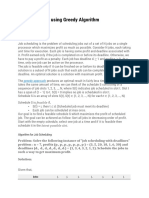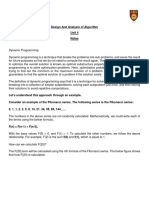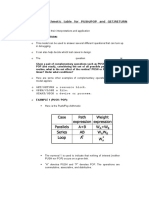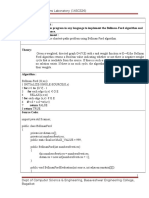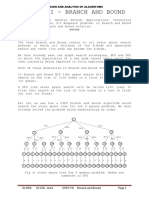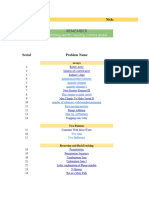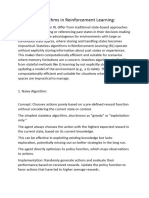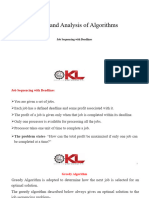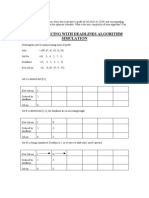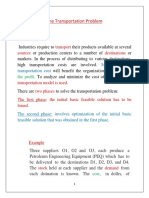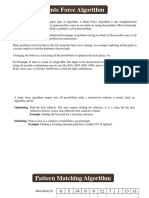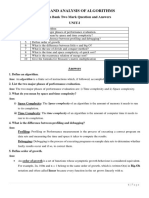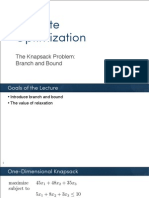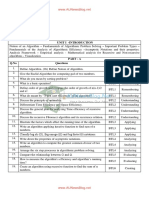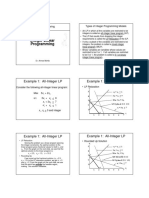0% found this document useful (0 votes)
2K views24 pagesBranch and Bound With JS (Least Cost, Job Sequencing)
The branch and bound algorithm is used to solve optimization problems by traversing the state space tree in a breadth-first manner. At each node, it calculates bounds on the objective function for partial solutions and prunes those that exceed the best possible value. The key is finding an inexpensive but effective bounding function. It works by maintaining a queue of partial solutions and expanding the most promising ones first based on the bounds.
Uploaded by
Shivansh GoelCopyright
© © All Rights Reserved
We take content rights seriously. If you suspect this is your content, claim it here.
Available Formats
Download as PDF, TXT or read online on Scribd
0% found this document useful (0 votes)
2K views24 pagesBranch and Bound With JS (Least Cost, Job Sequencing)
The branch and bound algorithm is used to solve optimization problems by traversing the state space tree in a breadth-first manner. At each node, it calculates bounds on the objective function for partial solutions and prunes those that exceed the best possible value. The key is finding an inexpensive but effective bounding function. It works by maintaining a queue of partial solutions and expanding the most promising ones first based on the bounds.
Uploaded by
Shivansh GoelCopyright
© © All Rights Reserved
We take content rights seriously. If you suspect this is your content, claim it here.
Available Formats
Download as PDF, TXT or read online on Scribd
/ 24

